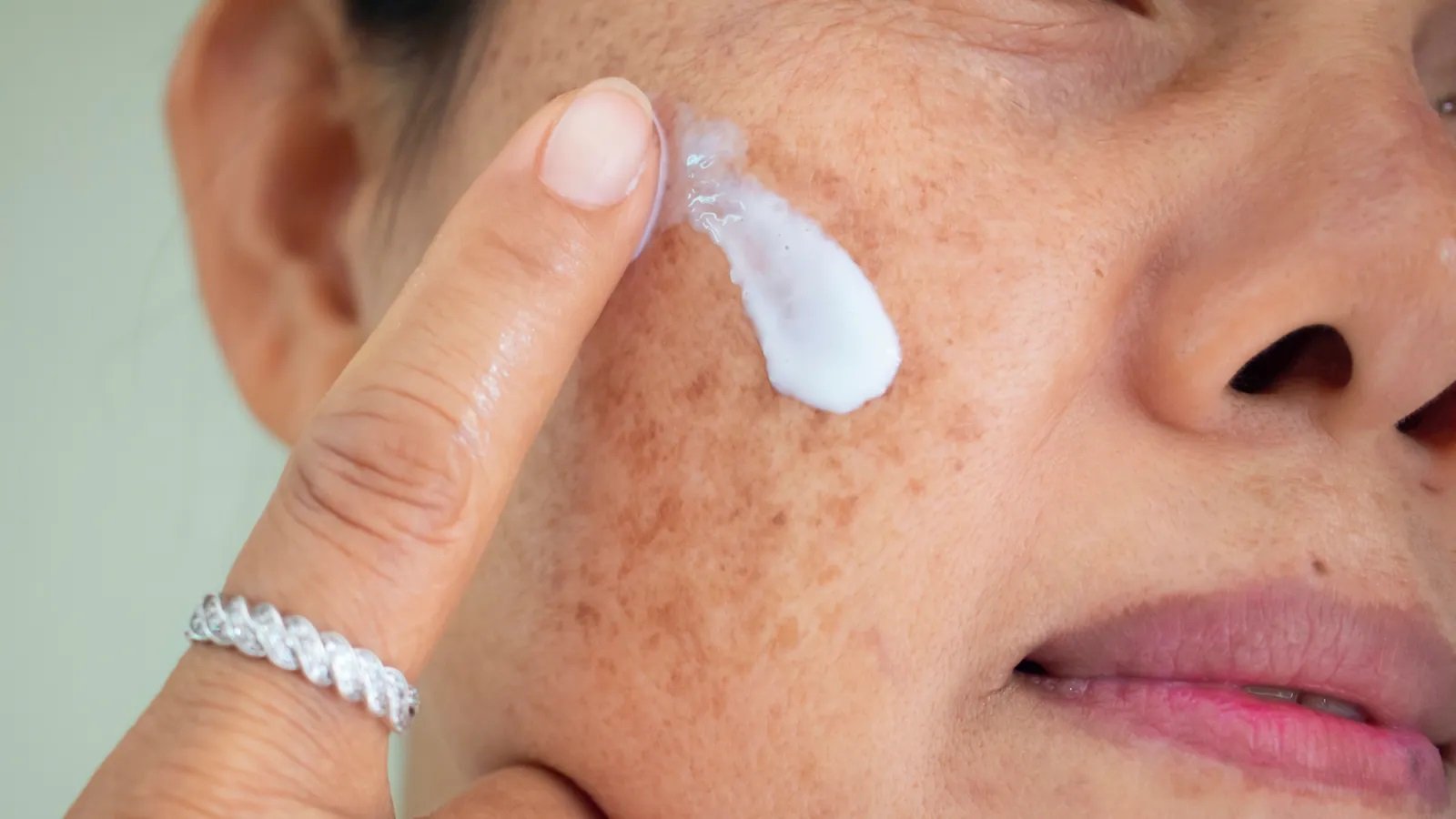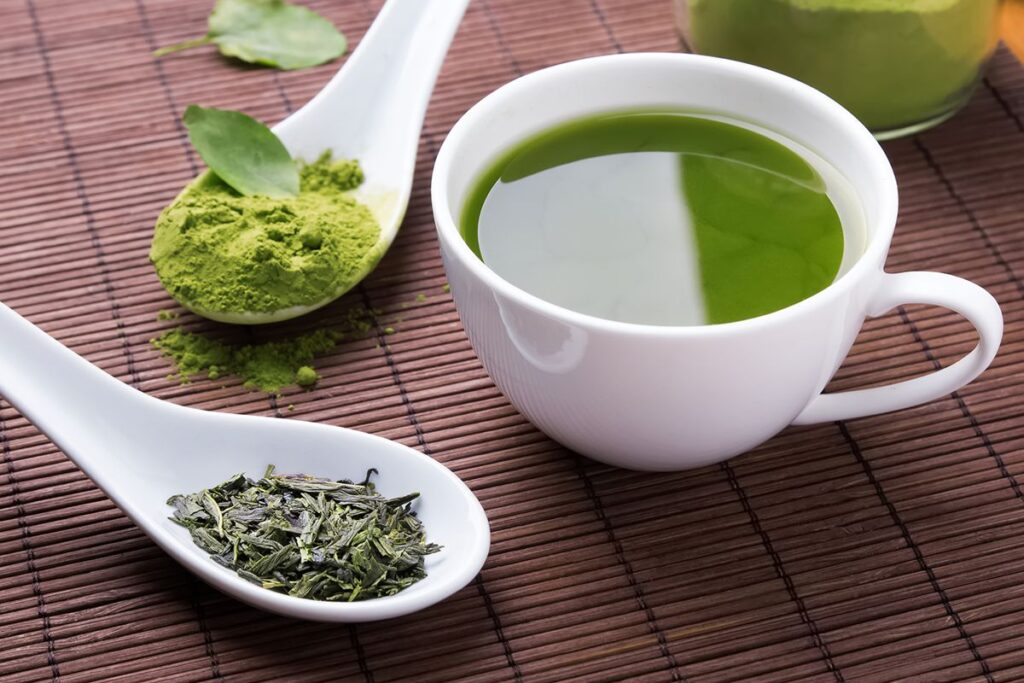What Are Black Spots on the Face?
- Black spots, medically known as hyperpigmentation, are areas of the skin that become darker and pigmented than the surrounding skin.
- This pigmentation occurs when an excess of melanin, the pigment that is responsible for the skin color, forms deposits in the skin.
- Black spots can vary in size and can appear anywhere on the face.
Common Causes of Black Spots
Sun Exposure

- Over exposure to the sun’s ultraviolet rays is the most common cause of black spots.
- UV rays stimulate melanocytes, the cells that produce melanin, leading to an overproduction and clustering of melanin in certain areas.
Post-Inflammatory Hyperpigmentation (PIH)

- PIH occurs after an inflammatory skin condition like acne, eczema, or a skin injury.
- The inflammation triggers melanin production as the skin heals, resulting in dark spots.
Hormonal Changes

- Hormonal fluctuations, especially those related to pregnancy or oral contraceptives, can cause a condition known as melasma.
- Melasma leads to the formation of dark, irregular patches on the face.
Aging

- As we age, our skin undergoes many changes, including a slowdown in cell turnover and increased melanin production, leading to age spots or liver spots.
Medical Conditions

- Certain medical conditions, like Addison’s disease or hemochromatosis, can cause hyperpigmentation.
Prevention of Black Spots
Preventing black spots involves a combination of protective measures and lifestyle adjustments:
Sun Protection

- Wear a broad-spectrum sunscreen with an SPF of at least 30 daily.
- Wear protective clothing, hats, and sunglasses to minimize sun exposure.
- Seek shade whenever possible, especially during peak sun hours.
Skincare Routine
- Cleanse your face twice daily to remove any impurities and prevent acne.
- Exfoliate regularly to promote cell turnover and prevent the buildup of dead skin cells.
- Use products containing antioxidants like vitamin C to protect your skin from free radical damage.

Healthy Lifestyle

- Try to follow a balanced diet rich in fruits, vegetables, vitamins, and antioxidants.
- Stay hydrated to keep your skin healthy.
- Avoid smoking and drinking of alcohol, as these can accelerate skin aging and hyperpigmentation.
Treatment Options for Black Spots
Various treatments are available to reduce the appearance of black spots, ranging from topical treatments to professional procedures:
Topical Treatments

- Hydroquinone: A skin-lightening agent that inhibits melanin production. It’s available over-the-counter or in higher concentrations via prescription.
- Retinoids: Vitamin A derivatives that promote cell turnover and reduce pigmentation. Available in prescription-strength formulations and over-the-counter options like retinol.
- Vitamin C: An antioxidant that brightens the complexion and inhibits melanin production. Look for serums or creams with stable forms of vitamin C.
- Alpha Hydroxy Acids (AHAs): Exfoliating agents that help remove the upper layer of skin, revealing fresher skin underneath. Common AHAs are glycolic acid, lactic acid, etc.
Professional Treatments

- Chemical Peels: Use of chemical solutions to exfoliate the skin and improve pigmentation. These can range from mild to deep peels, depending on the severity of the spots.
- Microdermabrasion: A non-invasive cosmetic technique that uses tiny crystals to exfoliate the skin, improving texture and pigmentation.
- Laser Therapy: Targeted beams of light that break down melanin deposits and stimulate collagen production. Various types of lasers are used depending on the depth and type of pigmentation.
- Micro needling: A procedure involving fine needles to create tiny injuries in the skin, promoting collagen production and the absorption of topical treatments.
Natural Remedies for Black Spots
Aloe Vera
- Contains aloin, a natural depigmenting compound.
- Apply fresh aloe Vera gel to the pigmented area before bedtime.

Lemon Juice
- Rich in citric acid and vitamin C, lemon juice can lighten dark spots.
- Apply diluted lemon juice to the skin and rinse off after 10-15 minutes.
- Be cautious as it can be irritating and increase sun sensitivity.

Apple Cider Vinegar
- It contains acetic acid, which will help lighten pigmentation.
- Mix with water and apply to the spots for a few minutes before rinsing.

Green Tea Extract
- Contains antioxidants that improves skin tone.
- Apply cooled green tea bags to the skin or use products containing green tea extract.

When to See a Dermatologist
While many black spots are harmless and respond well to at-home treatments, some may require professional evaluation. Consult a dermatologist if:
- You notice a sudden increase in the number or size of black spots.
- The spots have irregular borders, multiple colors, or change in appearance.
- You experience itching, bleeding, or other symptoms associated with the spots.
- Over-the-counter treatments are ineffective after several months of consistent use.
Conclusion
Black spots on the face can be a cosmetic concern for many, but with the right knowledge and treatment strategy, they can be managed effectively. Prevention through sun protection and a healthy lifestyle is key, while various treatment options, from topical agents to professional procedures, offer solutions for reducing their appearance. Consult with a dermatologist for tailored advice and treatment plans designed to your specific skin needs. With consistent care and the right treatments, achieving clearer, more even-toned skin is within reach.




